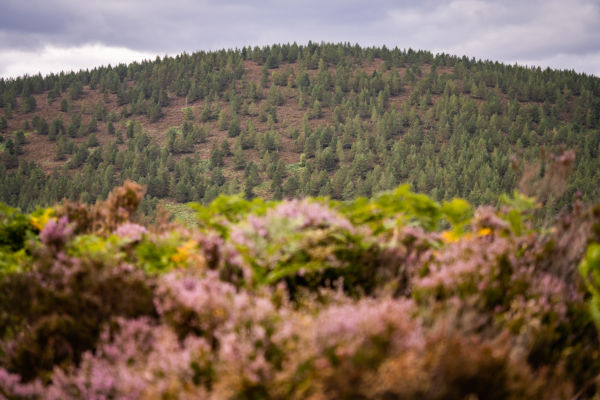As we move into the winter, we spoke to Wildlife Manager, Adam, to discuss the year at Glen Tanar – particularly the busy autumn season.
September and October comprise the height of the red stag season. And this occupies most of our wildlife department's time when guests visit Glen Tanar for traditional hill stalking and some forest stalking.
“We know that this is an emotive subject, of course we do. Trophy hunting is associated with stalking and brings with it some negative connotations – but what many have not considered is that stalking does not necessarily go hand-in-hand with trophy hunting; the two have entirely different purposes. The stalking we undertake is fundamentally about the balance and well-being of the herd and the conservation of the land – we’re 100% committed to both."
Adam Smith - Wildlife Manager

“We undertake stalking to cull from the herd. In other words, to ensure that the herd is in the best possible condition. By stalking the oldest and weakest, we’re not only strengthening the overall condition of the herd, we’re also protecting those older animals from a very slow and painful demise. Old stags have old teeth, and those teeth prevent them from feeding well during the winter, causing them to slowly deteriorate and die. That’s not the end these magnificent animals deserve."
Adam Smith - Wildlife Manager
Glen Tanar is part of a wider group of estates that work collaboratively on deer management at a landscape scale. Together the estates collectively count the deer, model the population and work out what numbers of deer culled are appropriate to achieve our land management objectives. Glen Tanar works with Nature Scot, the Cairngorms National Park Authority and other agencies. In this area we have successfully been reducing the deer population to achieve Scottish Government targets.
But how do we calculate the number of stags and hinds to cull?
"The answer is to work at a local and a landscape scale with constant surveillance. We count the deer, which is not an easy job. The counts are done via a mixture of helicopter count, on-foot count (including early morning counts in the spring) and thermal imaging – this is definitely not a random exercise. We also monitor the success of the regeneration of the trees and peatland."
Adam Smith - Wildlife Manager

“In other words, we’re as committed to the regeneration of our forest as we are to the health of our deer herds. We work to ensure the correct density of deer to allow for the natural regeneration of the forest and support peatland restoration work. It’s a balancing act, managing the shifting secretive population of deer, and growth rates of the vegetation."
Adam Smith - Wildlife Manager
The stalking season is most certainly a busy one, but it involves year-long surveillance to ensure its undertaken responsibly. It’s not about sport, it’s about that critical balancing act between healthy wildlife and a sustainable environment.